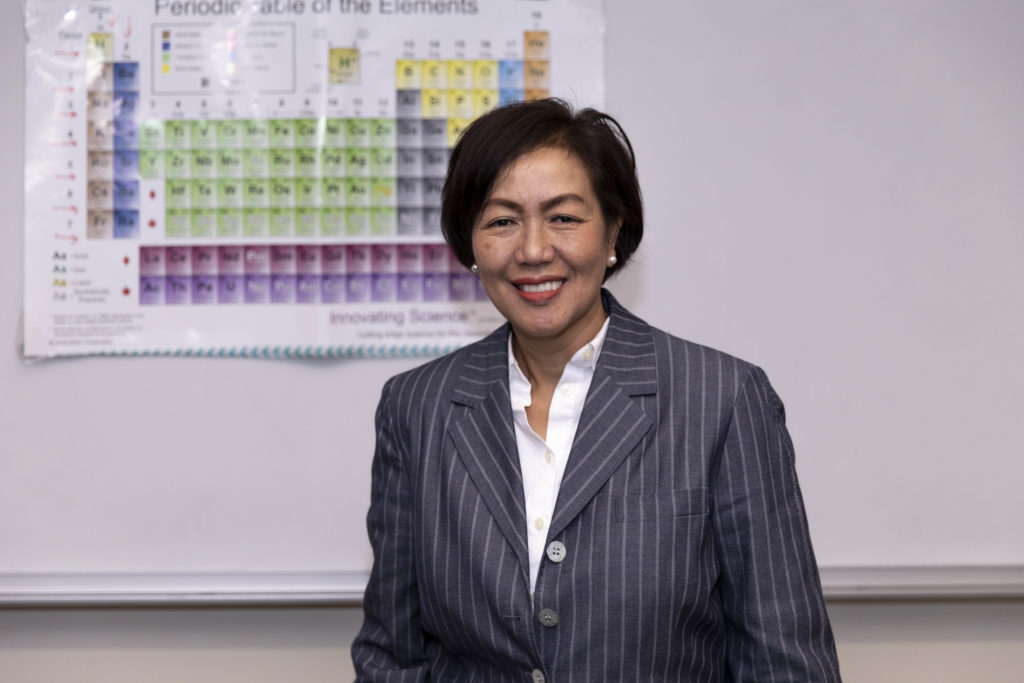An Element of Surprise: My 36 Years in the Classroom

Growing up in a small provincial town in the Philippines, Marinela Cortez never imagined that an interest in the periodic table would lead to a degree in chemistry and a teaching career that has spanned 36 years. A desire to support student success and bridge learning gaps for students prompted her to become a Green Dot educator 15 years ago.
Cortez began teaching chemistry in 1983 at a private school in the Philippines. At this school, she initiated an outreach program with a local public elementary school in an underserved community. For Cortez, this experience was a stark reminder of the educational inequalities that betray the promise of public education. She became a teacher to help students love the sciences and make a difference in their lives. Though she was accomplishing this objective, she knew that she possessed the capacity to do more-- to truly be an agent of change.
After moving to the United States in the early 2000s, Cortez heard about the work Green Dot was doing in Los Angeles. At that time, Green Dot consisted of only four high schools, each located in historically underserved communities where students in nearby schools were dropping out at high rates. Cortez saw a career at Green Dot as an opportunity to help address the inequality in education and opportunities between students in low-income households and their more affluent peers. In 2004, Cortez joined Ánimo Inglewood Charter High School where she taught for eight years. In 2012, Cortez began serving students in the Boyle Heights community at Oscar De La Hoya Ánimo Charter High School.
Why Science?
While Cortez recognizes that not all of her students will become chemists, she knows that the skills students learn while establishing an understanding of core chemistry concepts will serve them long after they forget the formula for the dissociation of iron (II) phosphate. She knows that a high quality science and mathematics education has the capacity to improve students' ability to succeed later in life by supporting the development of crucial soft and hard skills needed for today’s technology driven workforce.
Today, an education in the sciences is not limited to the role of a scientist. In fact, such a degree provides a pathway to a wide variety of careers including but not limited to: landscape architecture, video game design, nutrition, fashion design, illustration, and engineering. Given the role of technology in our world, it’s not surprising that careers in Science, Technology, Engineering, and Mathematics (STEM) occupies over 8.6 million jobs in the United States. Even though STEM jobs make up over six percent of the overall national employment, each year millions of these jobs go unfulfilled. Employers can’t find candidates with the skills needed to do this work because the pipeline to a career in STEM is weak. The pathway to these careers begins in K-12, before students ever step foot on a college campus, but the achievement and opportunity gaps that exist in underserved communities are a barrier.
Students in underserved communities are much less likely to be exposed to STEM opportunities than their peers near affluent communities. In fact many of these students will miss out on rudimentary science courses, therefore limiting access to advanced classes and likely thwarting future opportunities in STEM. In 2018, the California School Board Association reported that 37 percent of California public high schools do not offer physics and 25 percent lack chemistry courses. This educational inequality is the reason Green Dot exists; our model ensures that students receive a high quality education, access to foundational and advanced courses, and exposure to diverse career pathways.
Growing Your Dot
Cortez is a lifelong learner, it’s one of the reasons why her commitment to education has extended over three decades. Early in her career she found that through teaching she gained a deeper appreciation of the concepts she had studied in high school and college.
Though the education landscape has changed greatly over Cortez’s career, at Green Dot she has been equipped with the tools to meet new challenges. “The support I receive from our curriculum specialists, department chairs, and other colleagues has given me the tools to successfully navigate through the many curriculum changes over the past 15 years,” reflected Cortez. Green Dot’s systems of support, coaching, and robust professional development opportunities have ensured that all of our schools and teachers are prepared to accelerate learning, meet state standards, and effectively respond to students’ needs. Despite the technological advances and evolution of education, Cortez says one thing has remained the same: “Students can learn at high levels if they feel safe, supported, challenged, and have trust in their teacher. If a teacher makes them feel those things, students will learn.”
